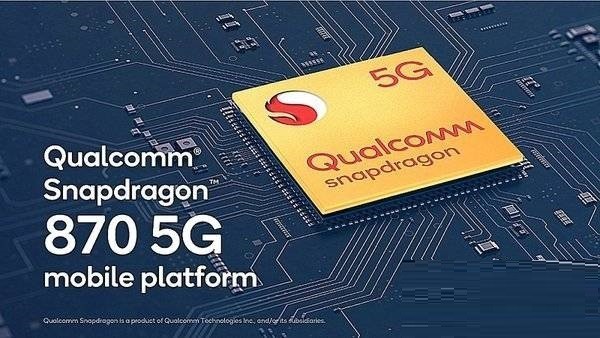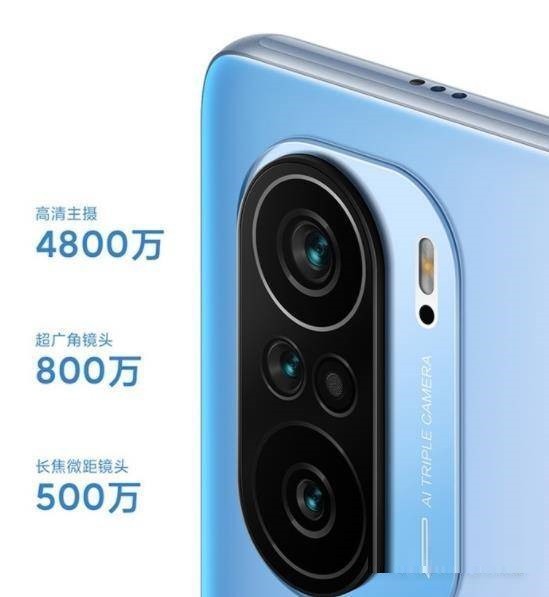 Mobile Tutorial
Mobile Tutorial
 Android Phone
Android Phone
 What is the difference between Redmi note11Pro+ and Redmi K40_Comparison introduction between Redmi note11Pro+ and Redmi K40
What is the difference between Redmi note11Pro+ and Redmi K40_Comparison introduction between Redmi note11Pro+ and Redmi K40
What is the difference between Redmi note11Pro+ and Redmi K40_Comparison introduction between Redmi note11Pro+ and Redmi K40
php Xiaobian Yuzai will introduce to you the difference between Redmi Note 11 Pro and Redmi K40. Both phones are high-performance products of the Redmi brand, with excellent hardware configuration and satisfactory user experience. . The main focus of the Redmi Note 11 Pro is its large 5000mAh battery and 120W fast charging technology, while the Redmi K40 highlights its advantages of high refresh rate and extremely fast core. This article will provide a detailed comparison and introduction of these two mobile phones in terms of screen, camera, processor, battery, price, etc., so that everyone can better understand the advantages and disadvantages between them.
1. Mobile phone screen
Redmi note11Pro:
is equipped with a 6.67-inch OLED screen, and it still has a 120Hz refresh rate, which brings us a good visual experience Oh
Redmi K40:
A 6.67-inch AMOLED E4 screen with a single-hole design in the middle, supports 120Hz refresh rate, and HDR 10 technology.
Summary: Although both phones are 120Hz, the Redmi K40 uses an AMOLED E4 screen, which is very good in terms of visual effects.

2. Core configuration
Redmi note11Pro:
adopts 6nm process, A78 architecture, 2 A78 clocked at 3.0GHz The large cores include 3 A78 medium cores clocked at 2.6GHz and 4 A55 small cores clocked at 2.04GHz.
Redmi K40:
Snapdragon 870, 7nm process technology, [1 3 4] eight-core architecture.
3.2GHz A77 large core x1 2.42GHz A77 large core x3 1.80GHz A55/core x4, GPU model is Adreno 650.
Equipped with the Snapdragon x55 5G baseband, it uses an external 5G baseband and is a quasi-flagship positioned processor.
Summary: The performance gap between the two processors is not big. Although Dimensity 1200 has better configuration in terms of process, the GPU is not satisfactory. Generally speaking, the overall performance of Snapdragon 870 will be better. a little better.

3. Camera
Redmi note11Pro:
This phone uses a rear 100-megapixel main camera, and it also has a 16-megapixel selfies, easy to cope with basic daily life
Redmi K40:
Equipped with five cameras, equipped with 20 million front-facing cameras, 48 million 8 million rear cameras and 5 million rear cameras, supporting macro Take photos, and incorporates rich photo functions and gameplay.
Summary: Although the Redmi note11Pro has a 100-megapixel main camera, its overall performance is not as outstanding as that of the K40. The K40’s balanced performance coupled with diverse gameplay brings a better visual experience.

4. Battery life
Redmi note11Pro:
This phone has a very balanced battery life, not only has a 4500mAh battery but also It still has a 120W charging rate, which definitely allows friends to play freely without any pressure
Redmi K40:
4520mAh large battery, supports 33W charging rate, but supports wireless Fast charging.
Summary: The batteries of the two mobile phones are very similar, but the Redmi note11Pro has a 120W charging rate.
Same points
1. Redmi note11pro and Redmi k40 are dual-SIM dual-standby 5G full Netcom phones.
2. Both Redmi note11pro and Redmi k40 support NFC function.
2. Differences
1. The appearance of Redmi note11pro and Redmi k40 are different. Redmi k40 is available in four colors: bright black, clear snow, fantasy, and ink feather. The body size is 163.7x76.4x7.8mm and the weight is 196g. The Redmi note11pro is also available in four colors: Mysterious Black Realm, Light Dream Galaxy, Time Silent Purple, and Misty Forest. The body size is 163.65x76.19x8.34mm and the weight is 207g. .
2. The screens of Redmi note11pro and Redmi k40 are different. Redmi k40 is slightly better. It is a 6.67-inch Samsung E4 material AMOLED screen with a 120hz refresh rate and 1300nit peak brightness. 900nit global brightness, 5000000:1 contrast ratio. The Redmi note11pro is a 6.67-inch Samsung ordinary AMOLED screen, which also has a 120hz refresh rate, 700nits global brightness, 4500000:1, and 1200nits peak brightness.
3. The processors of Redmi note11pro and Redmi k40 are different. Redmi k40 is equipped with Qualcomm Snapdragon 870, and its overall performance is stronger than the MediaTek Dimensity 920 of Redmi note11pro.
4. The storage of Redmi note11pro and Redmi k40 is also different. Redmi k40 uses LPDDR5 UFS3.1, with optional 6GB, 8GB, and 12GB running memory. There are two body storage options: 128GB and 256GB. The Redmi note11pro uses UFS 2.2 LPDDR4x, with 6GB and 8GB running memory options, and 128GB and 256GB body storage options.
5. The lenses of Redmi note11pro and Redmi k40 are also different. Redmi k40 has a 20-megapixel front-facing AI beauty camera, a 48-megapixel ultra-clear main camera, an 8-megapixel ultra-wide-angle lens, and a 5-megapixel Telephoto macro lens. Redmi note11pro has a 16-megapixel main camera on the front, a 108-megapixel ultra-clear main camera, an 8-megapixel ultra-wide-angle lens, and a 2-megapixel macro lens on the rear.
6. The battery and charging speed of Redmi note11pro and Redmi k40 are also different. Redmi note11pro is 5160mah and supports 65w wired fast charging, while Redmi k40 is 4520mah and supports 33w wired fast charging.
The above is the detailed content of What is the difference between Redmi note11Pro+ and Redmi K40_Comparison introduction between Redmi note11Pro+ and Redmi K40. For more information, please follow other related articles on the PHP Chinese website!

Hot AI Tools

Undresser.AI Undress
AI-powered app for creating realistic nude photos

AI Clothes Remover
Online AI tool for removing clothes from photos.

Undress AI Tool
Undress images for free

Clothoff.io
AI clothes remover

Video Face Swap
Swap faces in any video effortlessly with our completely free AI face swap tool!

Hot Article

Hot Tools

Notepad++7.3.1
Easy-to-use and free code editor

SublimeText3 Chinese version
Chinese version, very easy to use

Zend Studio 13.0.1
Powerful PHP integrated development environment

Dreamweaver CS6
Visual web development tools

SublimeText3 Mac version
God-level code editing software (SublimeText3)

Hot Topics
 1386
1386
 52
52
 How to set up Xiaomi nfc (how to enable the nfc function on Xiaomi mobile phones)
Apr 06, 2024 pm 09:10 PM
How to set up Xiaomi nfc (how to enable the nfc function on Xiaomi mobile phones)
Apr 06, 2024 pm 09:10 PM
1. How to enable the NFC function of Xiaomi mobile phone. How to enable the NFC function of Xiaomi mobile phone. The NFC function of Xiaomi mobile phone is a very practical function that allows you to complete payment, access control and other operations more conveniently and quickly in your life. However, many Xiaomi mobile phone users do not know how to turn on the NFC function. Next, let us learn more about how to turn on the NFC function of Xiaomi mobile phones. Step 1: Open the phone settings First, we need to open the phone settings. You can enter settings by clicking the settings icon on the phone desktop or from the drop-down notification bar. In the settings interface, we need to find the "Wireless & Networks" option and click to enter. Step 2: Turn on the NFC function. In the "Wireless and Networks" option, we can see the "NFC" option. Click to enter
 Simple steps to enable NFC function on Alipay
Apr 11, 2024 pm 06:43 PM
Simple steps to enable NFC function on Alipay
Apr 11, 2024 pm 06:43 PM
1. Click [Settings] in the upper right corner of the Alipay [My] interface. 2. Click the [General] option. 3. Click [NFC]. 4. Turn on the switch on the right side of [NFC Function]. Editor's tip: To use Alipay's NFC function, your phone must support the NFC function, otherwise it cannot be used.
 How to set up access control card NFC on Xiaomi 14?
Mar 18, 2024 pm 01:19 PM
How to set up access control card NFC on Xiaomi 14?
Mar 18, 2024 pm 01:19 PM
In addition to its excellent performance and functions, Xiaomi Mi 14 also supports NFC, which allows the mobile phone to communicate wirelessly with smart access cards. Through settings, we can bind the NFC function of Xiaomi 14 to the access card to achieve convenient access card management. Next, the editor will introduce how to set up the NFC function of Xiaomi 14 for access control cards. How to set up access control card NFC on Xiaomi 14? 1. Open the wallet, click on the door card, click on the physical door card to add, and put the Xiaomi smart lock close to the NFC area. 2. Select to continue reading the card content in the pop-up window, put the Xiaomi smart lock close to the NFC area again, enter the card name, select the card, and click Finish. 3. Click Write and place the Xiaomi smart lock close to the NFC area to complete the reading. You just need to follow the instructions above
 How to copy the access card on Xiaomi 11_Tutorial on copying the access card on Xiaomi 11
Mar 25, 2024 pm 01:00 PM
How to copy the access card on Xiaomi 11_Tutorial on copying the access card on Xiaomi 11
Mar 25, 2024 pm 01:00 PM
1. First, we need to open the mobile phone, and then click on the desktop to open the [Xiaomi Wallet] software of the Xiaomi mobile phone. In the software, the user can see the cards that can be simulated and added, click on the access card option you want to simulate, and click to enter. 2. In the interface for adding access cards, click the yellow plus sign add button in the lower right corner, click Add, and copy and add an access card to the back of the phone according to the phone operation prompts to successfully simulate. 3. Select the physical access card simulation, click [Start Detection], and place the access card near the NFC function area on the back of the phone. Do not remove it. The phone will detect and copy the information in the access card to the phone. 5. After completion, you only need to call up the card swiping interface on your phone each time, and then bring the back of the phone's head close to the card swiping sensing area to complete the sensing operation.
 How to enable nfc function on Xiaomi Mi 14 Pro?
Mar 19, 2024 pm 02:28 PM
How to enable nfc function on Xiaomi Mi 14 Pro?
Mar 19, 2024 pm 02:28 PM
Nowadays, the performance and functions of mobile phones are becoming more and more powerful. Almost all mobile phones are equipped with convenient NFC functions to facilitate users for mobile payment and identity authentication. However, some Xiaomi 14Pro users may not know how to enable the NFC function. Next, let me introduce it to you in detail. How to enable nfc function on Xiaomi 14Pro? Step 1: Open the settings menu of your phone. Step 2: Find and click the "Connect and Share" or "Wireless & Networks" option. Step 3: In the Connection & Sharing or Wireless & Networks menu, find and click "NFC & Payments". Step 4: Find and click "NFC Switch". Normally, the default is off. Step 5: On the NFC switch page, click the switch button to switch it to on.
 How to set up nfc function on iPhone 12_Tutorial sharing on turning on nfc on iPhone 12
Mar 23, 2024 pm 12:40 PM
How to set up nfc function on iPhone 12_Tutorial sharing on turning on nfc on iPhone 12
Mar 23, 2024 pm 12:40 PM
1. Select General Functions from the Settings menu. 2. Find the NFC option. 3. Turn on the button on the right side of NFC.
 How to set up access control card NFC on Xiaomi 14 Pro?
Feb 10, 2024 am 08:54 AM
How to set up access control card NFC on Xiaomi 14 Pro?
Feb 10, 2024 am 08:54 AM
As Xiaomi's latest flagship product, Xiaomi Mi 14Pro provides many practical functions in addition to powerful performance configurations. Among them, the NFC function is a commonly used function, but many users do not know how to set the NFC of the access control card. Next, I will introduce to you how to set up the access control card NFC on Xiaomi 14Pro. How to set up access control card nfc on Xiaomi 14Pro? To set the access card NFC function of Xiaomi 14Pro, you can follow the steps below: Open the "Settings" application of your phone, and in the settings interface, scroll down and select "More Settings". In the more settings interface, find and select the "NFC and payment" option. In the NFC and payment settings interface, make sure the "NFC" switch is turned on. Click
 Which one is better, Huawei Band or Xiaomi Band? Detailed introduction: Hardcore comparison between Huawei and Xiaomi Bands
Mar 06, 2024 pm 03:30 PM
Which one is better, Huawei Band or Xiaomi Band? Detailed introduction: Hardcore comparison between Huawei and Xiaomi Bands
Mar 06, 2024 pm 03:30 PM
In May, Huawei launched a new Huawei Band 7 product, with the standard version priced at 239-249 yuan during the 618 period. Also in May, Xiaomi also launched a new generation of Mi Band 7 products. The price of the standard version was also between 239-249 yuan during the 618 period. When the prices are very close, for consumers who want to buy a wearable product, which of these two products will be more suitable for you? The content of this issue will bring comprehensive actual testing of the product to help you choose the most suitable product. The deadline for this comparison is June 14, and the firmware of both bracelets is the latest firmware. The full text totals about 5,800 words and takes 15 minutes to read completely. This time we chose the Huawei Band 7 Standard Edition and the Xiaomi Mi Band 7 Standard Edition for comparison. Both products are



